Complete Solutions to level-5 Straight Objective Questions of chapter ALKENES of Class 11 book with complete answers and questions
| Class 11 | CHEMISTRY |
| Chapter | ALKENES |
| NARAYANA | level-5 Straight Objective Questions |
| Number Of Questions | 50 |
| Academic Year | 2023-24 |
Prof. Jonh gave a task to synthesize
 to three of his stundent ali, divakar and micheal. Difference routes were adopted by them.
to three of his stundent ali, divakar and micheal. Difference routes were adopted by them.
Ali's method



Which of the following statements is correct?View SolutionWhich o fthe following will give allyl halide?
03:29View SolutionIn the reaction

The product X is.View SolutionA compound 'A' decolourises bromine water and it undergoes catalytic reduction to give decalin. When 'A' Treated with how conc. Potassium permanganate and acidification gives cis-cyclohexane-1,2-dicarboxylic acid and oxalic acid. Compound 'A' is
06:27View SolutionIn the following reaction
 Product A is01:49View Solution
Product A is01:49View Solution View Solution
View SolutionRank the following in the increasing order of rate of reaction with HBr.
 02:22View Solution
02:22View Solution`CH_(3)-overset(CH_(3))overset(|)(C)=CH_(2)+(CH_(3))_(2)CHCH_(3)overset(HF)underset(273K)(to)C_(8)H_(18)(A)`
Unknown (A) in the above reaction is:02:59View Solution`2CH_(3)-underset(Ph)underset(|)(C)=CH_(2)overset(HF)tounderset(("major"))((A))`. Product (A) is
03:40View SolutionMajor product of the given reaction is:
`H_(2)C=CH-CH_(2)-Ioverset(HI("excess"))underset(C Cl_(4))(to)`01:36View Solution
Major product of this reaction is02:29View Solution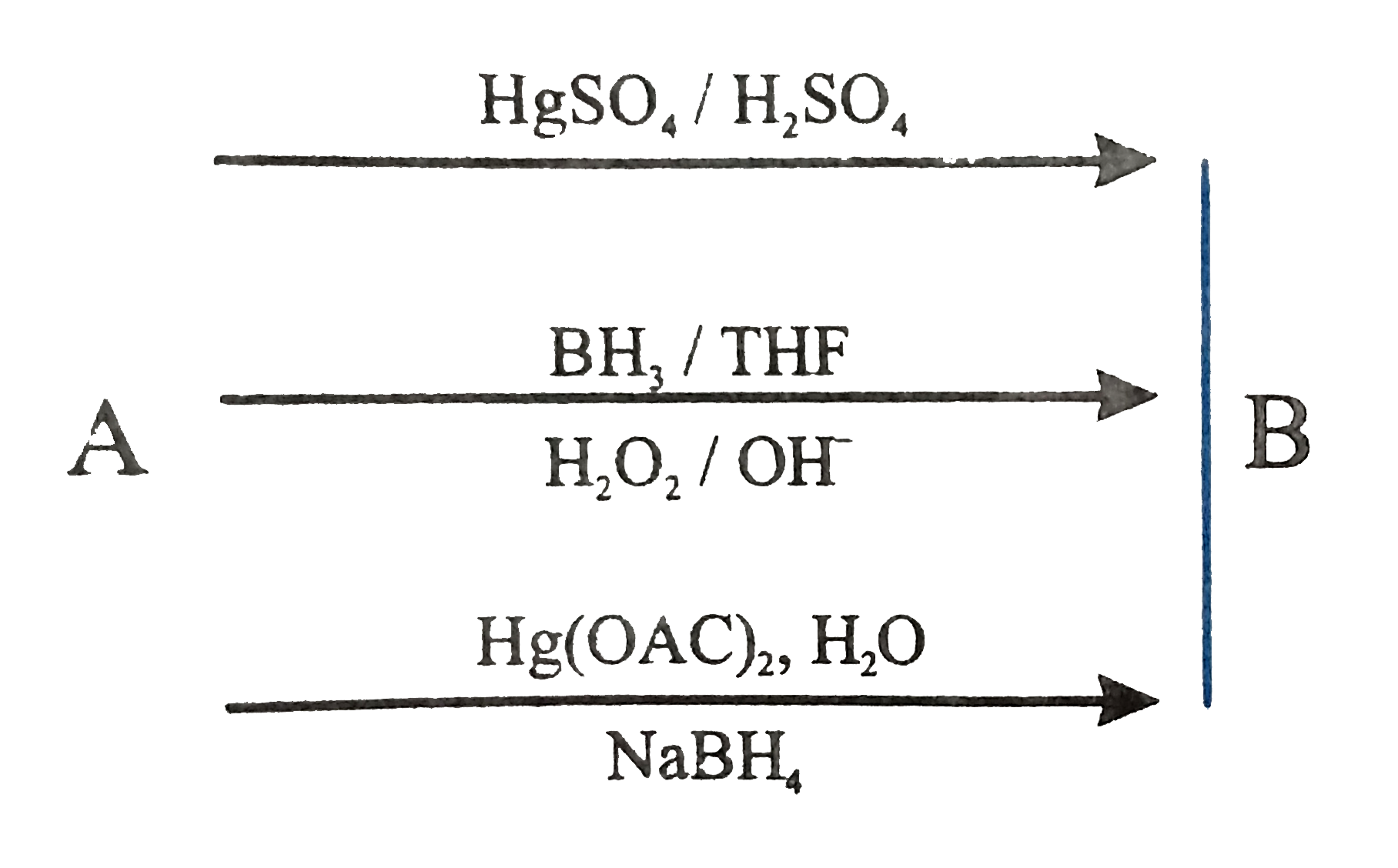
B is identical when A is09:08View Solution
Product may not be06:26View SolutionHydrogenation of alkenes and alkynes takes place in presence of certain catalysts. In sabatier-Senderen's reaction, the addition of hydrongen taken place in presence of nickel catalyst. Controlled hydrogenation of alkyne in presence of Lindlar's catalyst gives cis-alkene. Non terminal alkynes are reduced by Na or Li metal dissolved in liquid `NH_(3)`. In this reaction trans alkenes are formed.
Q. In which of the following the reaction is most exothermicView SolutionHydrogenation of alkenes and alkynes takes place in presence of certain catalysts. In sabatier-Senderen's reaction, the addition of hydrongen taken place in presence of nickel catalyst. Controlled hydrogenation of alkyne in presence of Lindlar's catalyst gives cis-alkene. Non terminal alkynes are reduced by Na or Li metal dissolved in liquid `NH_(3)`. In this reaction trans alkenes are formed.
Q. The product of the following reaction is
 View Solution
View SolutionHydrogenation of alkenes and alkynes takes place in presence of certain catalysts. In Sabatier Senderen's reaction, the addition of hydrogen takes place I presence of Raney nickel catalyst. Platininm and palladium can also be used as catalyst and used in finley divided state. Experimentally, it is observed that less crowded alkenes adsorb `H_(2)` with faster rate. Controlled hydrogenation of alkyne `H_(2)` with faster rate. Controlled hydrogenation of alkyne in presence of Lindlar's catalyst yields cis product i.e., 'cis' alkene. Thus, in presence of Lindlar's catalyst 'syn' addition takes place. The relative rate of hydrogenation follows the order:

Non-terminal alkynes are reduced in presence of Na or Li metal dissolved in liquid ammonia. In this reaction, anti-addition of hydrogen results into the trans-product.
Answer the following questions:
The relative rate of catalytic hydrogenation of following alkenes is:
 04:42View Solution
04:42View SolutionAcid catalysed hydration of alkene give alcohol. In thic reaction addition of water takes place according to Markownikov's rule. Since intermediate carbocation is formed in this reaction, rearrangment of carbocation takes place. In oxymercuration-demercuration reaction hydration of alkene takes place according to markownikov's rule. Oxymercuratio-demercuration-dermercuration no rearrangement is possible. in hydroboration-oxidation hydration of alkene takes place according to anti marjownikow's addition. in HBO reaction rearrangement is not possible. both in oxymercuration-demercuation and hydroboration-oxidation, intermediate carbocation are not formed.
Q. The product formed in the following reaction is:
 Pruduct06:04View Solution
Pruduct06:04View SolutionAcid catalysed hydration of alkene give alcohol. In thic reaction addition of water takes place according to Markownikov's rule. Since intermediate carbocation is formed in this reaction, rearrangment of carbocation takes place. In oxymercuration-demercuration reaction hydration of alkene takes place according to markownikov's rule. Oxymercuratio-demercuration-dermercuration no rearrangement is possible. in hydroboration-oxidation hydration of alkene takes place according to anti marjownikow's addition. in HBO reaction rearrangement is not possible. both in oxymercuration-demercuation and hydroboration-oxidation, intermediate carbocation are not formed.
Q. The product formed in the following reaction is:
 Pruduct06:04View Solution
Pruduct06:04View SolutionAcid catalysed hydration of alkene give alcohol. In thic reaction addition of water takes place according to Markownikov's rule. Since intermediate carbocation is formed in this reaction, rearrangment of carbocation takes place. In oxymercuration-demercuration reaction hydration of alkene takes place according to markownikov's rule. Oxymercuratio-demercuration-dermercuration no rearrangement is possible. in hydroboration-oxidation hydration of alkene takes place according to anti marjownikow's addition. in HBO reaction rearrangement is not possible. both in oxymercuration-demercuation and hydroboration-oxidation, intermediate carbocation are not formed.
Q. `CH_(3)-C-=C-Hunderset(H_(2)O_(2)//OH^(-))overset((Sia)_(2)HB)toA,` A is06:04View SolutionAlkenes can be prepared by Cope elimination, hofmann elimination and pyrolysis of ester etc.

Q. Structure of A is06:56View SolutionAlkenes can be prepared by Cope elimination, hofmann elimination and pyrolysis of ester etc.

Q. Structure B is06:56View SolutionAlkenes can be prepared by Cope elimination, hofmann elimination and pyrolysis of ester etc.

Q. Structure of C is06:56View SolutionThe stereospecificity of the reactions is a very good evidence that E2 reactions proceed through an anti-periplanar transition state. More evidence comes from the reactions of substituted cyclohexanes. Generally, all cyclohexanes are most stable in chair conformations. we know that substituets on cyclohexanes can be parallel with one another only if they are both axial. an equatorial C-X bond is anti-periplanar only to C-C bonds and cannot take part in an elimination. for unsubstitueted cyclohexyl halides treated with base, this is not a problem because, although the axial conformer is less stable, there is still a significant amount present and elimination can take place from thi conformer

Q. What is correct during dehydrobromiation of trans-2-methyl bromocyclohexane via `E_(2)` mechanism.14:48View SolutionThe stereospecificity of the reactions is a very good evidence that E2 reactions proceed through an anti-periplanar transition state. More evidence comes from the reactions of substituted cyclohexanes. Generally, all cyclohexanes are most stable in chair conformations. we know that substituets on cyclohexanes can be parallel with one another only if they are both axial. an equatorial C-X bond is anti-periplanar only to C-C bonds and cannot take part in an elimination. for unsubstitueted cyclohexyl halides treated with base, this is not a problem because, although the axial conformer is less stable, there is still a significant amount present and elimination can take place from thi conformer
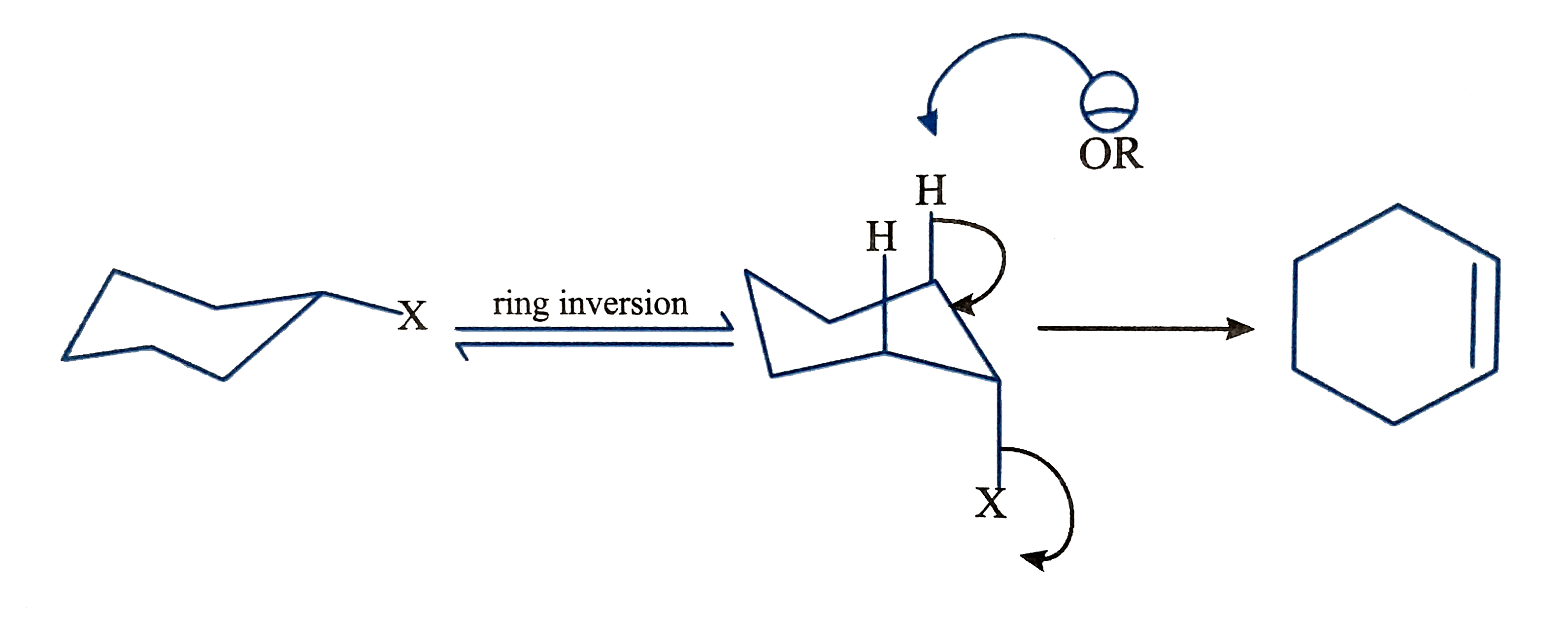
Q. Let us consider the two-diastereoisomeric cyclohexyl chlorides derived from menthol which react under same coditions with sodium ethoxide.

Find the correct one:14:48View SolutionThe stereospecificity of the reactions is a very good evidence that E2 reactions proceed through an anti-periplanar transition state. More evidence comes from the reactions of substituted cyclohexanes. Generally, all cyclohexanes are most stable in chair conformations. we know that substituets on cyclohexanes can be parallel with one another only if they are both axial. an equatorial C-X bond is anti-periplanar only to C-C bonds and cannot take part in an elimination. for unsubstitueted cyclohexyl halides treated with base, this is not a problem because, although the axial conformer is less stable, there is still a significant amount present and elimination can take place from thi conformer
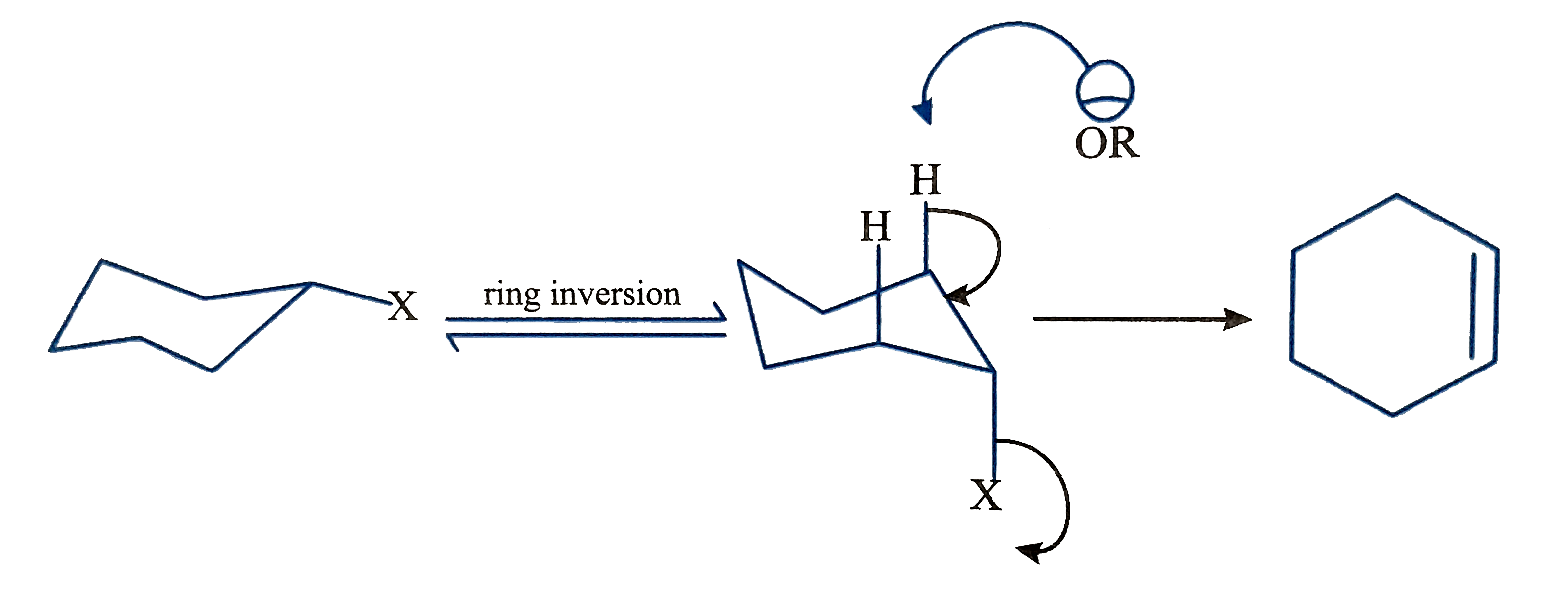
Q. Let us consider the stable cis-and trans-isomers of 4-tert-butylcyclohexyl-p-toluene sulphonate.14:48View SolutionDehydrtion of alcohol is unimolecular as well as bimolecular reaction. Dehydration takes place by the use of non volatile acids. The reaction is maily used for the preparation of alkenes. Alkenes can also be prepared by dehalogenation of vic dihalides and dehydro halogenation.
Q. In the given reaction, the final product is/are:
`CH_(3)-underset(CH_(3))underset(|)overset(CH_(3))overset(|)(C)-CH_(2)-CH_(2)-CH_(2)OHunderset(Delta)overset(H_(2)SO_(4))to`06:23View SolutionDehydrtion of alcohol is unimolecular as well as bimolecular reaction. Dehydration takes place by the use of non volatile acids. The reaction is maily used for the preparation of alkenes. Alkenes can also be prepared by dehalogenation of vic dihalides and dehydro halogenation.
Q. Major product of the reaction is06:23View Solution
Major product of the reaction is06:23View SolutionMatch the column
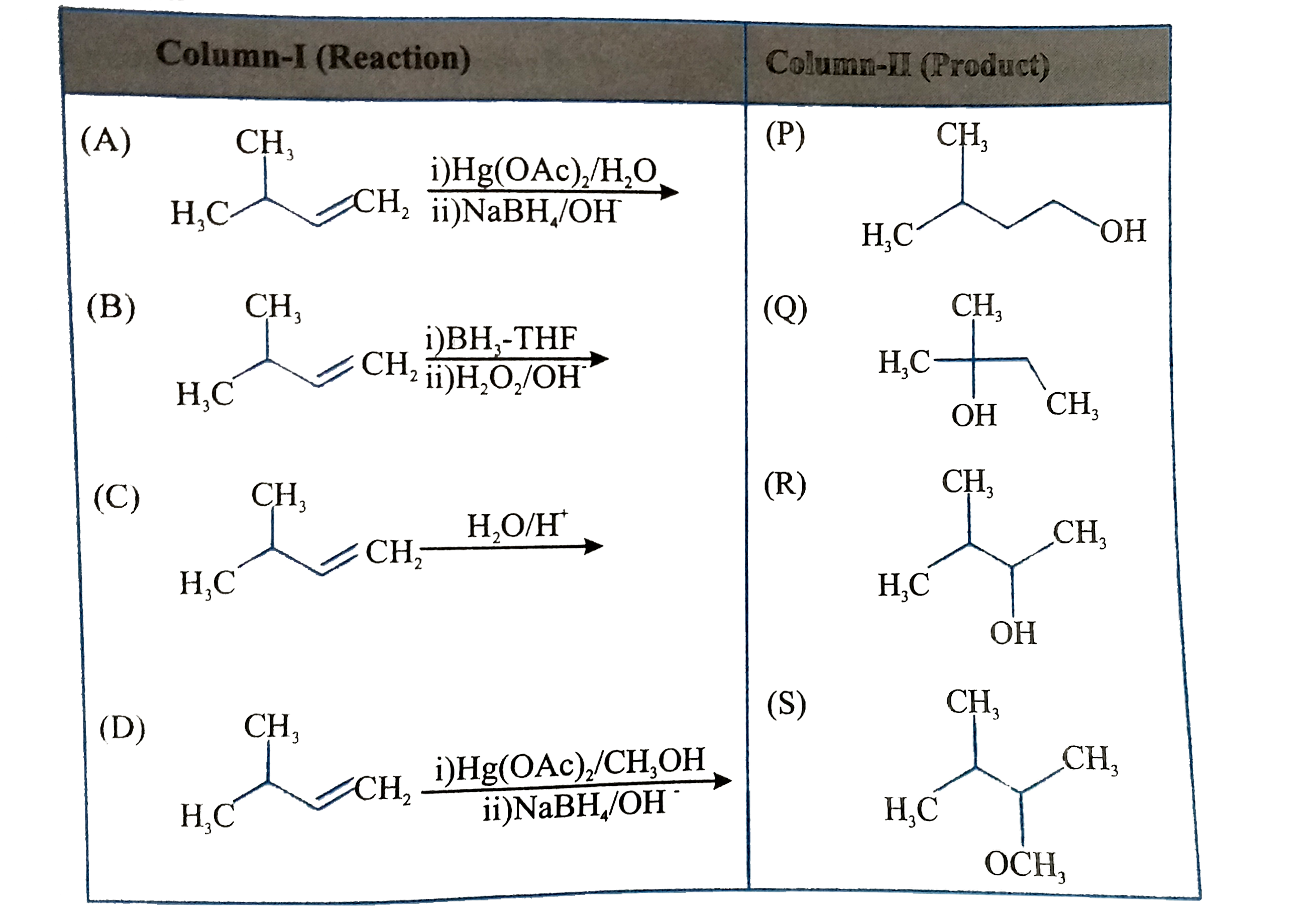 03:32View Solution
03:32View SolutionMatch the following
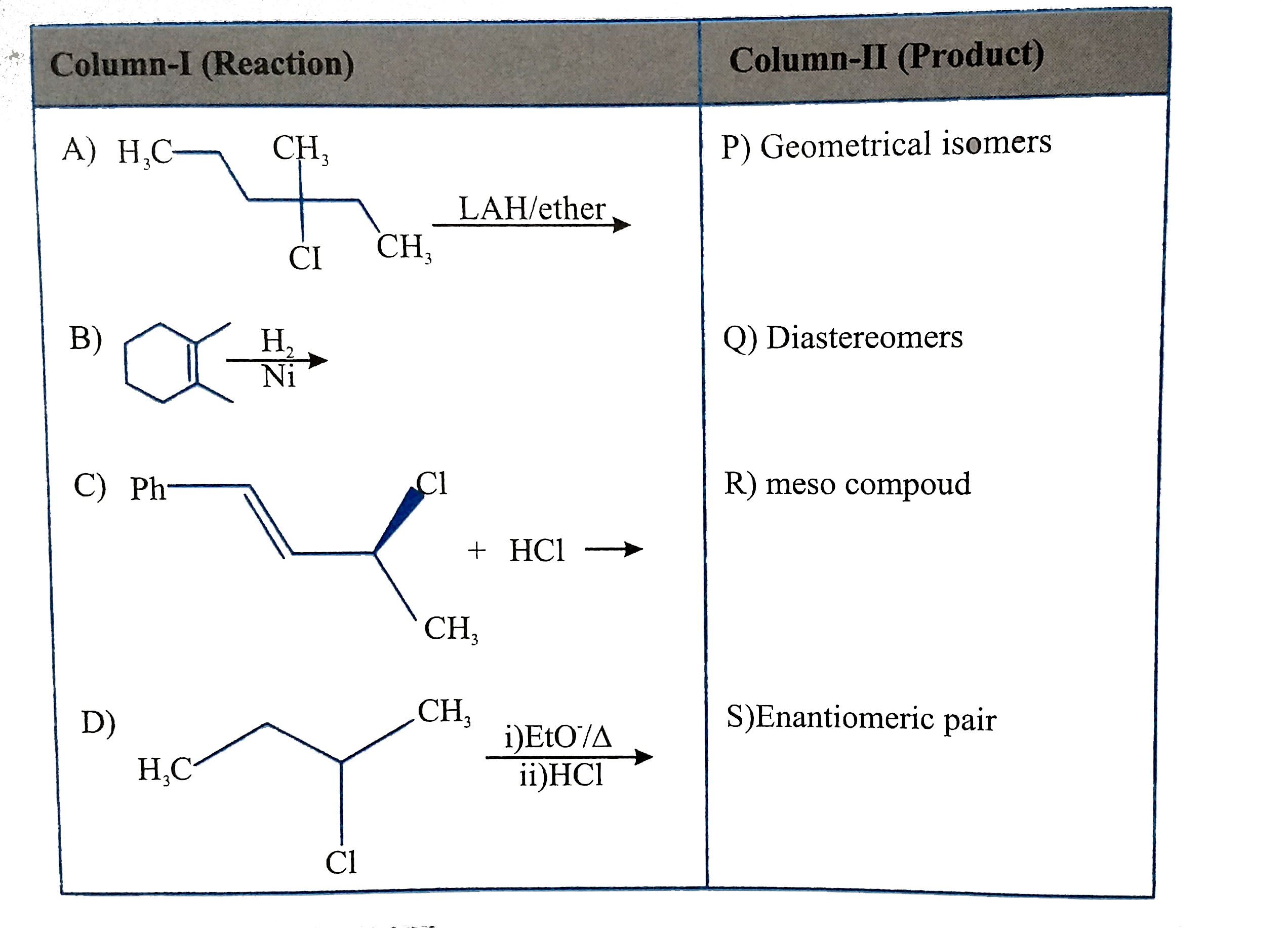 06:07View Solution
06:07View SolutionMatch each of the compound in column I with the product of reductive ozonolysis in column-II
 03:26View Solution
03:26View SolutionStatement-I: Cis-2- butene gives meso compound with Baeyer's reagent.
Statement-II: Baeyer's reagent give anti addition reaction with alkenes.01:57View SolutionAssertion: Addition of `Br_(2)` to `1`-butane gives two optical isomers.
Reason: The product contains one asymmetric carbon atoms.02:11View SolutionStatement-I: Reaction of cold alkaline `KMnO_(4)` with alkenes is regioselective.
Statement-II: During the reaction of `KMnO_(4)` with alkene cyclic intermediates are formed.02:16View SolutionStatement-I: Alkenes are more reactive than alkynes towards HX.
Statement-II: Alkyl carbocation is more stable tha vinyl carbocation.02:05View SolutionStatement-I: Cis-2-butene gives dl-mixture with bromine.
Statement-II: Bromine give anti addition with alkene.03:22View SolutionStatement-I: Carbon-carbon double bond length in 2-butene is more than that of 1-butene.
Statement-II: Hyperconjugation increases the bond length of carbon-carbon double bond.03:46View SolutionStatement `I:` `1-`Butene on reaction with `HBr` in the presence of a peroxide produces `1-` bromobutane.
Statement `II:` It involves the formation of a primary radical.04:08View SolutionLet us consider the following reaction:
`CH_(2)=CHCH=CH_(2)+HBr(leq)overst(-80^(@)C)tounderset("major")(A)+underset("minor")(B)`. At which carbon (follows IUPAC nomenclature), bromine is present in the major product.?02:32View SolutionIf the following compound is treated with Pd/C in excess of hydrogen gas, how many stereoisomers of the product will be obtained?
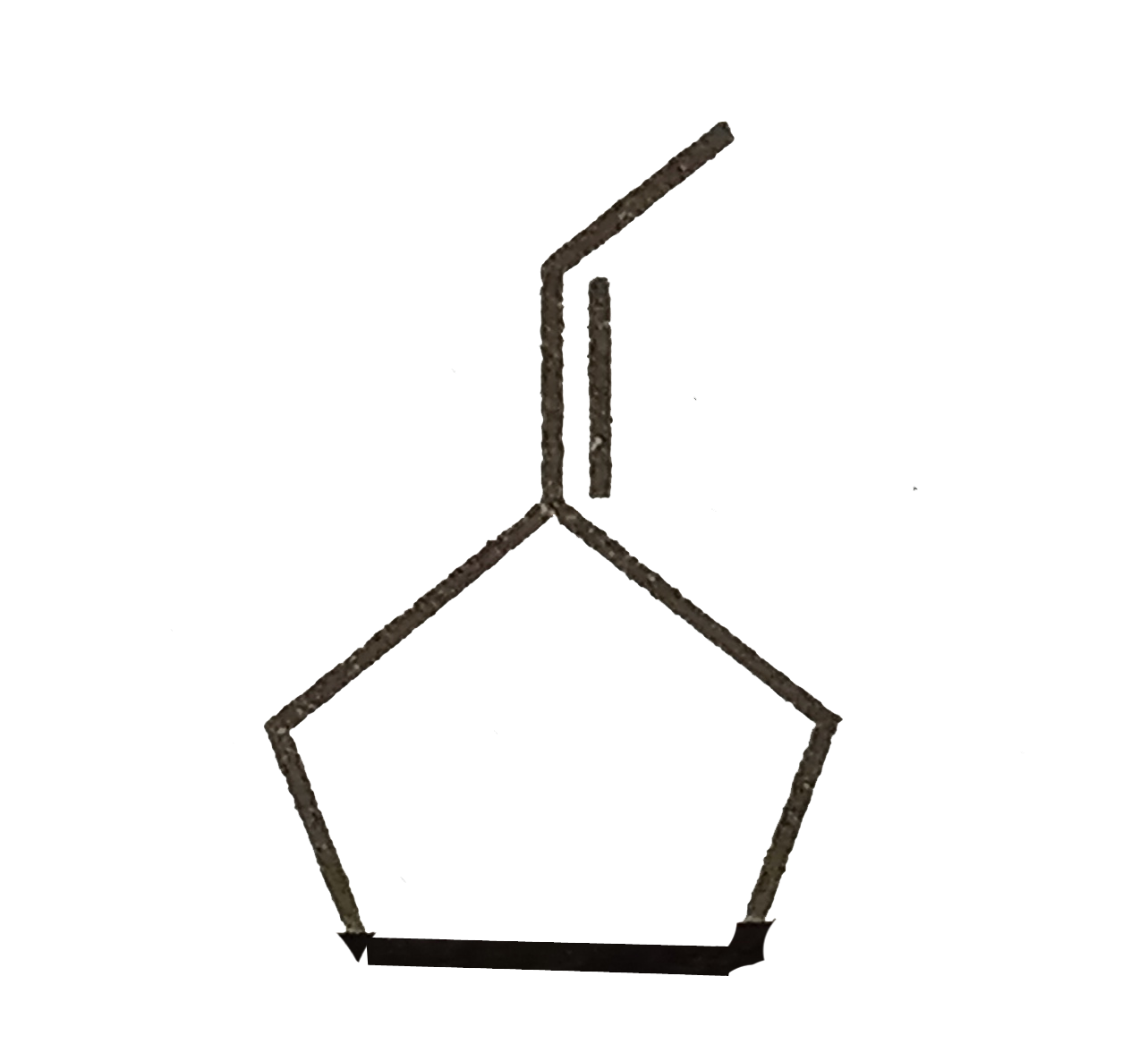 01:35View Solution
01:35View SolutionWhen 3-bromo-2,2-dimethyl butane is treated with alcoholic potassiumn hydroxide the number of possible alkene isomers formed is
02:34View SolutionIn how many of the following reactions regioselectivity can be observed.
(I). `CH_(3)-overset(CH_(3))overset(|)(C)H-CH_(2)-Ohunderset(Delta)overset(con" "H_(2)SO_(4))to`
(II). `CH_(3)-CH_(2)-CH_(2)-underset(OH)underset(|)(C)H_(2)underset(Delta)overset(Al_(2)O_(3))to`
(III). `CH_(3)-overset(CH_(3))overset(|)(C)-CH_(2)-CH_(2)-CH_(3)underset(Delta)overset(alc.KOH)to`
(IV). `CH_(3)-CH_(2)-underset(Br)underset(|)(C)H-CH_(2)-CH_(3)underset(Delta)overset(Alc.KOH)to`04:16View Solution (addition product)
(addition product)
Sum of x and y is _______.04:04View Solution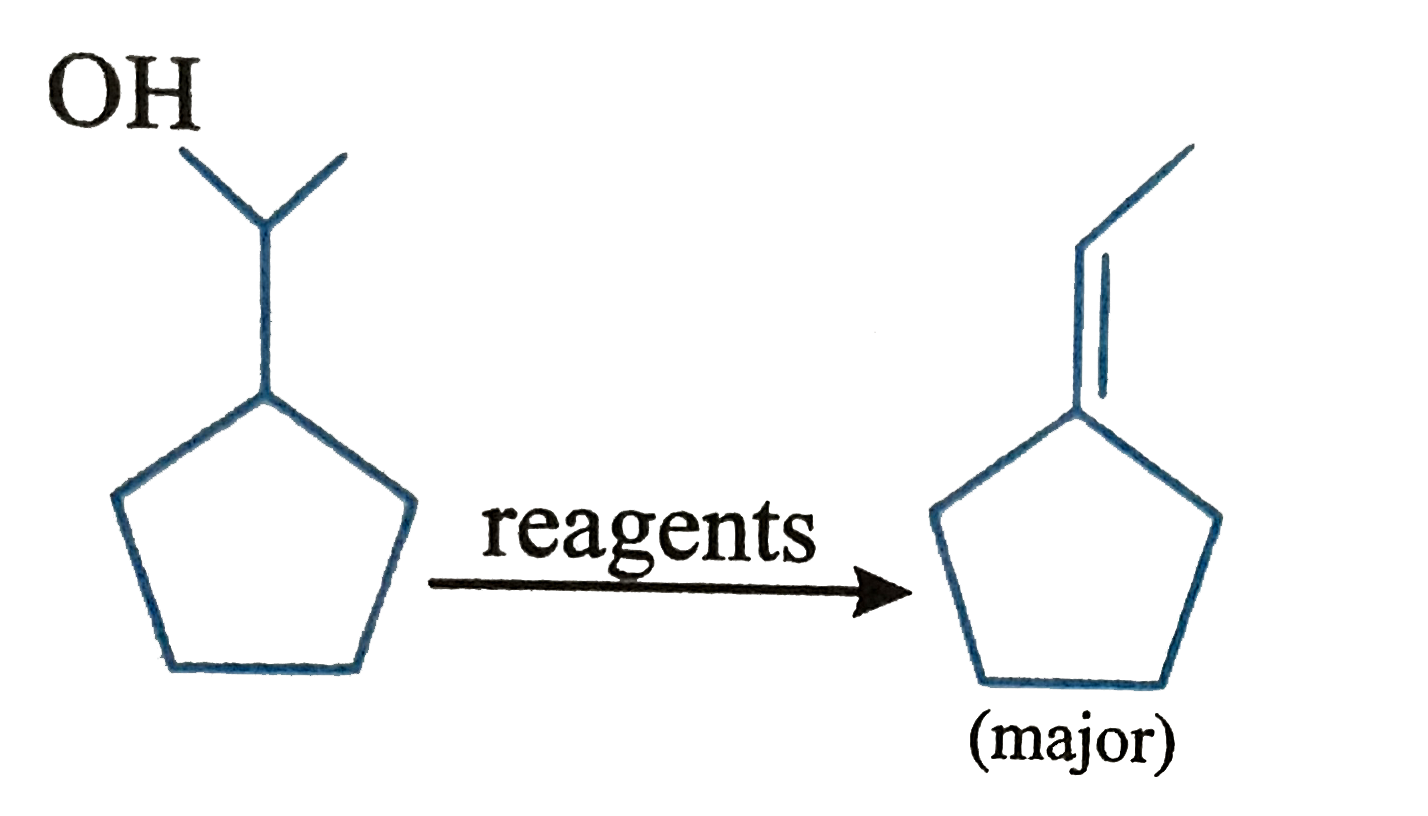
The number of the following reagents can be used for the above conversion is
(i). Conc. `H_(2)SO_(4)//Delta`
(ii). `Al_(2)O_(3)//Delta`
(iii). `ThO_(2)//Delta`01:54View SolutionComplete the following with appropriate reagents
 02:52View Solution
02:52View SolutionThe hydrocarbon [A] adds one mole of hydrogen in the presence of a platinum catalyst to form n-hexane. When [A] is oxidised vigorously with `KMnO_(4)`, a single carboxylic acid containing three carbon atoms is isolated. Give the strucure of [A] and explain the reactions.
04:27View SolutionThe moleculear formula of monomer (isoprene) present in natural rubber is `C_(5)H_(8)`. Its on reductive ozonolysis gives two moles of formaldehyde and one mole of 2-oxoproponal. IUPAC name of the monomer is
03:10View Solution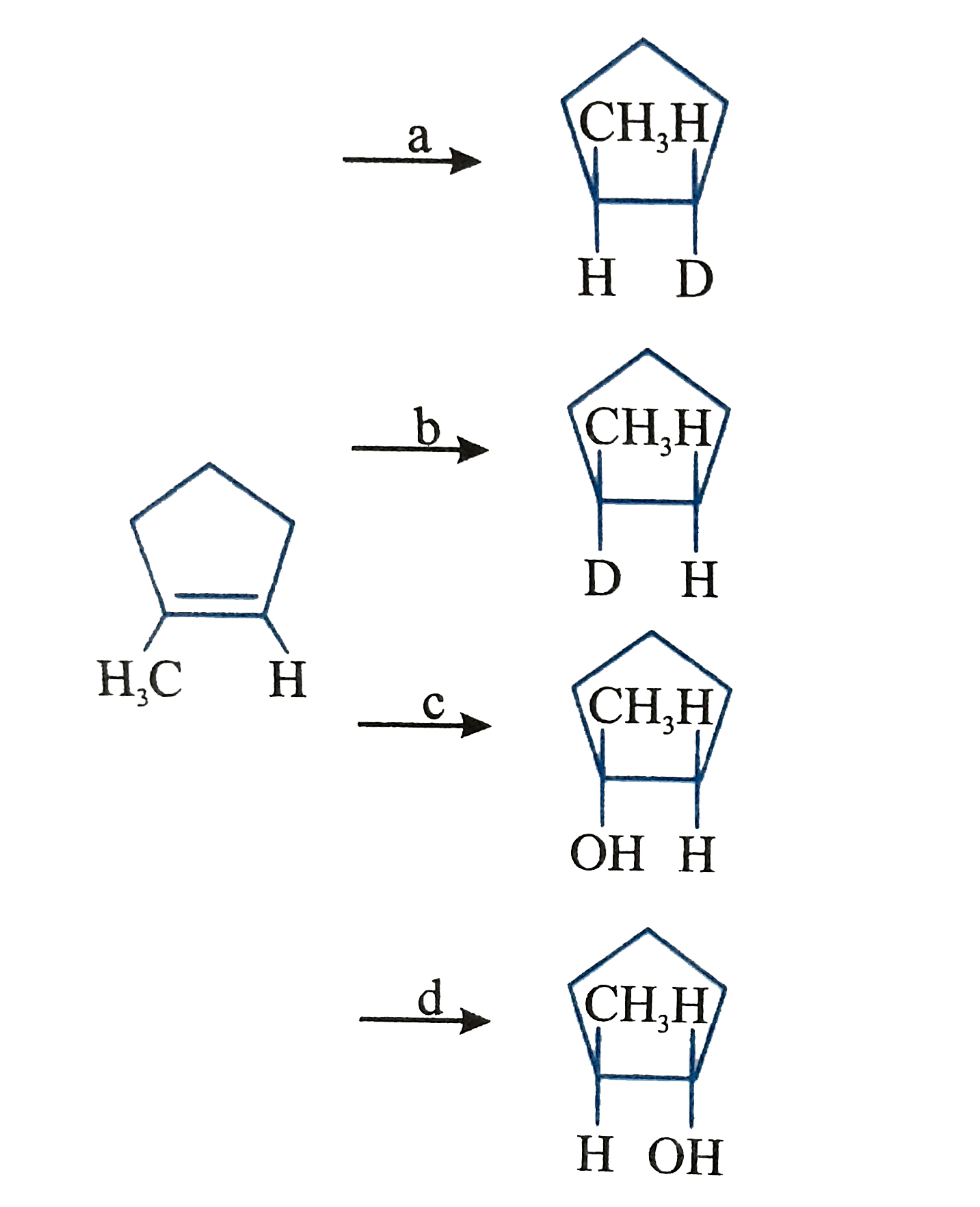
Fnd the reagents a,b,c & d for the following reactions.02:50View Solution
Identify x,y,z and w in the following reaction:02:52View SolutionAn organic compound (A) `C_(6)H_(10)` on reduction, first give (B) `C_(6)H_(12)` and finally (C) `C_(6)H_(14)` (A) on reaction with ozone followed by hydrolysis is presence of Zn gives two aldehydes `C_(2)H_(4)O` (D) and `C_(2)H_(2)O_(2)` (E) Oxdation of (B) with acidified `KMnO_(4)` gives acid (F) `C_(3)H_(6)O_(2)` Determine structures of (A) to (F) with proper reasoning.
06:27View SolutionTwo hydrocarbons (X) and (Y) have the same molecular formula `C_(3)H_(6)` Baeyer's reagent canb e colourised by (X) but not by (Y). Both (X) and (Y) on catalytic hydrogenation gives same product (Z). Identity X,Y and Z.
02:24View Solution
level-5 Straight Objective Questions questions and complete solutions for chapter ALKENES of NARAYANA CHEMISTRY (HINGLISH) of Class 11
